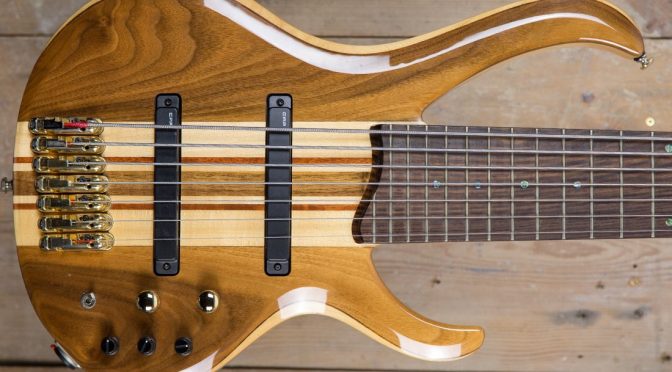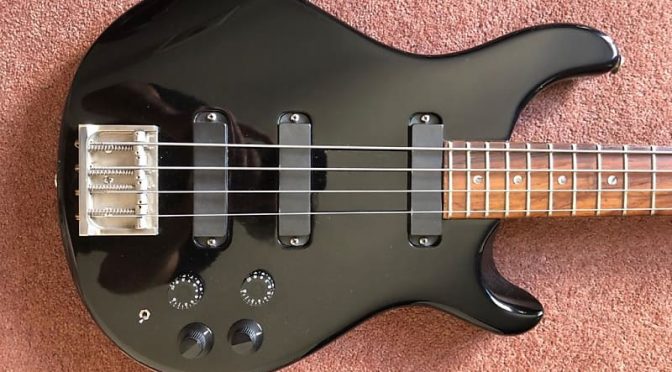7-String Bass Demo – Ibanez BTB7 Seven String Bass – Bass Practice Diary – 25th May 2021
This week I played a 7-string bass for the first time in nearly seven years. I used to play 7-string bass a lot in my 20’s and I owned two, one fretted and one fretless. I decided to sell them because I had stopped using them. When I put them both on eBay, the fretless sold straight away but the fretted bass didn’t. So I made a video demo to try and sell the fretted bass as well. That video was uploaded in the summer of 2014 and that was the last time I played a 7-string bass before this week.
7-String Bass Pro’s and Con’s
I think the reason for putting more strings on a bass is simple, more range. It takes the instrument into the realm of an instrument that can do anything, melody, chords, bass lines etc. But there are down sides to adding more and more strings. Weight is an obvious one and balance is an even bigger one. More strings means a bigger neck and a bigger neck unbalances the instrument, especially when you carry it on a strap.
I remember playing my seven string basses in my early 20’s with weights stuck onto the strap with electrical tape. The weights were there to counter balance the neck and prevent it from diving towards the floor. It worked in preventing the neck dive. But as you can imagine, the combination of 7-string bass plus weights made an unbelievable amount of weight to carry on my shoulder. I can’t imagine doing that now.
Another issue that I found with 7-string basses was string spacing. As you cram more strings onto a bass neck, you need to make the spaces between the strings smaller. Otherwise the neck becomes too big to play. It’s certainly possible to adapt to a narrower string spacing, but at the time I sold my 7-string basses I was preferring a wider spacing and so that contributed to me not playing them as much.
Ibanez BTB 7 String Bass
So why did I decide to play a 7-string bass again now? Back in the days when I was playing 7-string basses (approx 2005-2011). 7-string basses weren’t made by mainstream guitar manufacturers. Both of my basses back then were made by builders that you would never have heard of. When I got my Warwick endorsement back in 2010, Warwick had just made their first 7-string bass. But it was an expensive custom shop bass costing thousands.
However, a few years after that, around the time I was thinking of selling my 7-string basses. Ibanez came out with this, the BTB7. Ibanez are one of the biggest guitar and bass manufacturers in the world. Not only was it unusual for a major manufacturer to make a line of 7-string basses, but the prices were incredibly cheap. I’ve always wanted to try one to see what they’re like, but I never wanted to buy one because they came out at a time when I was stopping playing 7-string basses.
I finally got my chance to play one this week and I think it’s very impressive for the money. It plays really well and balances far better than either of my old 7-string basses thanks to the long horn on the upper cutaway. It is still very heavy, but if you can cope with the weight then it’s hard to find any other fault with it.
I believe that the one I played was made in 2013. However, the most remarkable thing is that Ibanez are still making affordable 7-string basses today in 2013. Their current model is called the BTB747 and it looks very similar to the BTB7. I would like to congratulate Ibanez for showing that level of commitment to extended range basses. Extended range instruments are heavily stigmatised in the music world, and I’m sure that this video will generate plenty of negative comments. There is no reason for such stigmatisation. I can see no downside to wanting extra range on any instrument.


